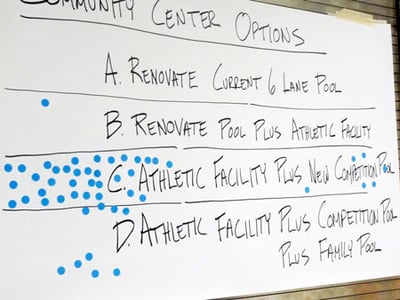
In the ever-evolving landscape of education, the importance of robust school infrastructure cannot be overstated. A school's physical environment shapes the experiences of students, teachers, and staff alike, affecting everything from academic performance to overall well-being. Yet, ensuring the vitality of these educational spaces often requires significant financial investment, typically through school bond campaigns.
However, the success of such campaigns isn't solely dependent on administrative efforts or political strategies. Rather, it hinges crucially on the active involvement and support of community members. Here, we explore the pivotal role that enlisting your community members plays in the success of school bond initiatives.
Fostering a Sense of Ownership
Schools are not just buildings; they are the heart of a community. Engaging community members in the decision-making process about school infrastructure investments fosters a sense of ownership and pride. When individuals feel that their input is valued and their concerns addressed, they are more likely to support the proposed initiatives.
By involving community members from the onset, school administrations display transparency and accountability, laying a solid foundation for trust and collaboration. This collaborative approach transforms stakeholders from mere spectators into active participants in shaping the future of their educational institutions.
Augmenting Advocacy Efforts
Community members are powerful advocates for school bond campaigns. Their firsthand experiences and personal connections within the community lend credibility and meaning to the campaign's messaging. When individuals share their stories about the impact of outdated facilities or the pressing need for essential upgrades, they humanize the issue and galvanize support.
Moreover, community members often have diverse skill sets and networks that can be leveraged to augment advocacy efforts. From organizing informational sessions to mobilizing grassroots campaigns, their collective efforts can significantly expand the reach and impact of the campaign, garnering broader community support.
Fostering Long-Term Sustainability
Successful school bond campaigns are not just about obtaining funding for immediate needs but also about safeguarding the long-term sustainability of educational facilities. Community engagement fosters a culture of stewardship wherein individuals stay invested in the ongoing maintenance and improvement of school infrastructure beyond the initial campaign.
By cultivating strong relationships with community members, schools can tap into local resources and expertise, helping ongoing dialogue and collaboration. This partnership-based approach lays the groundwork for future bond initiatives and sets up a cycle of continuous improvement driven by the shared commitment of all stakeholders.
Case Study: Community-Centric Bond Campaign
Take for example a client of ours, a Michigan Public School, and their efforts to involve the community in their successful bond campaign. I spoke with former Superintendent, Jim Cracraft, for details on how they engaged community members, which can be a daunting task when it is new to school leadership.
Mr. Cracraft explained that the school, at the time, had been on the cusp of paying off their bonded debt within the next 2-3 years. There were still building needs pending that their general budget wouldn’t be able to cover once the bond was complete, and it became apparent through their planning that they would need to extend their bond. They felt a key tactic for the campaign would be getting the community involved.
Setting up meetings with the former Superintendent and his Board Members, Mr. Cracraft and this group were able to develop a list of community stakeholders who would be concerned about the future of the school district. From there, they planned a number of events to meet with these stakeholders, including: four forums, attending regular “Breakfast Group” meetings to update the members, focus groups, open board meetings, the newspaper, online updates, and Q & A sessions at local churches. This was happening for a May 2021 election, so they were still facing shutdowns while trying to meet with their constituents. The school leaders persisted by using outdoor forums and Zoom when necessary. They spent most of their time in these meetings listening to “what is important” and what these groups wanted for the students.
The school leaders believe that being transparent during these events helped pass the bond as well as built up support for needed changes during construction. It was the highest bond amount they had ever asked for, and it was well received, passing 3-1!
With the bond passing, the school was able to complete an addition to the existing preschool, some updates to the elementary, and an addition to the high school with associated site work.
I asked Mr. Cracraft if he felt that involving the community affected the outcome of the campaign and what lessons he learned along the way? He said the transparency with the community “absolutely” helped. Lessons learned involved listening to their consultants for guidance, and that the community forums were a huge undertaking, but “it’s the duty of school leaders to put in the effort for their schools”.
Conclusion
Involving community members in school bond campaigns isn't just a matter of garnering support; it's about building strong foundations for educational excellence and community resilience. By embracing a collaborative approach that values diverse perspectives and fosters meaningful engagement, schools can ensure that their infrastructure investments align with the needs and aspirations of the communities they serve.
As you look to the future, recognize the transformative power of community engagement in shaping the educational landscape. Together, we can build schools that not only stand as physical structures but also as beacons of inspiration, opportunity, and community pride.
Generated with the assistance of ChatGPT AI.

